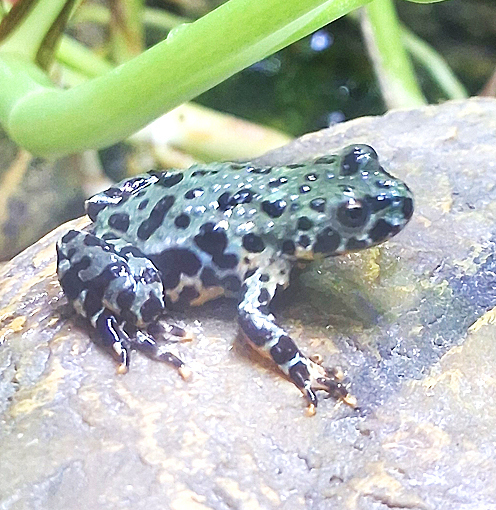The .pdf linked is very detailed and well-researched. Here’s very short summary of it:
Hybrid zones—regions where distinct species meet and interbreed—offer valuable insights into the role of ecological factors in shaping the genetic makeup of populations. The hybrid zone between Bombina bombina and B. variegata, two closely related species of fire-bellied toads, provides a compelling case study of hybridization at an ecotone, a region where ecological habitats shift abruptly. This paper explores the hybridization dynamics of Bombina species in the Stryi River Valley of Ukraine, drawing on a comprehensive study by Yanchukov et al. (2006) to examine the interplay between habitat preference, ecological gradients, and genetic introgression.
Yanchukov et al. (2006) investigated the hybrid zone between B. bombina and B. variegata in the Stryi River Valley, an area that exhibits a sharp ecological transition. The study employed a combination of genetic markers, including allozyme loci, single nucleotide polymorphisms (SNPs), and mitochondrial DNA (mtDNA) haplotypes, to trace the distribution of hybrid individuals. By analyzing allele frequency clines and comparing these with habitat features, the authors aimed to understand how ecological factors, such as aquatic habitat and elevation, influence the width and structure of the hybrid zone.
Ecotones, transitional zones between different ecological habitats, are key areas for studying hybridization. In the case of B. bombina and B. variegata, the ecotone is marked by differences in aquatic habitats: B. bombina prefers permanent ponds, while B. variegata is more adapted to ephemeral puddles. Yanchukov et al. (2006) suggest that the sharpness of the ecotone in the Stryi area plays a crucial role in shaping the narrow hybrid zone. The width of the hybrid zone, estimated at 2.3 km, is notably smaller than other Bombina hybrid zones studied across Europe, indicating that ecological factors such as habitat distribution and preference can significantly influence the extent of gene flow between species.
One of the key findings of the study is the role of habitat preference in structuring the hybrid zone. The authors argue that the distribution of B. bombina and B. variegata along the Stryi ecotone is not random but rather shaped by each species’ habitat preferences. B. bombina is adapted to ponds, while B. variegata favors puddles. This difference in habitat preference leads to a spatial segregation of the two species and reduces the dispersal of hybrid individuals across the ecotone. The authors suggest that this ecological barrier helps maintain the narrowness of the hybrid zone, even in the face of ongoing genetic exchange.
Moreover, the study shows that genetic introgression is asymmetric, with B. variegata alleles more frequently introgressing into B. bombina populations. This finding suggests that selective pressures may favor the spread of B. variegata genes into the B. bombina gene pool, possibly due to the greater dispersal capacity of B. variegata adults, which are better adapted to moving overland in search of new breeding sites.
The Stryi hybrid zone was resampled after more than 70 years, providing a unique opportunity to assess the stability of hybrid zones over long periods. Yanchukov et al. (2006) compare their results with those of previous studies, finding that the position and structure of the hybrid zone have remained largely unchanged. However, the study also highlights some shifts, particularly in the patterns of introgression along the riverbank, suggesting that hybrid zones may not be static and can evolve over time in response to changes in habitat and population dynamics.
The study by Yanchukov et al. (2006) offers valuable insights into the dynamics of hybrid zones and the influence of ecological factors on genetic flow. By combining genetic and ecological data, the authors demonstrate that hybrid zones are shaped not only by the direct interaction of species but also by the broader ecological context in which these species live. The narrow hybrid zone observed in the Stryi River Valley underscores the importance of habitat preference and distribution in determining the extent of gene flow between species. This study contributes to our understanding of how ecological gradients influence hybridization and highlights the importance of long-term studies in assessing the stability of hybrid zones.
I was surprised and disappointed to read about the sterility of Bombina bombina and Bombina variegata hybrids. The study revealed that while these two species can interbreed and produce hybrids, those hybrids are completely sterile due to severe gonadal defects.
Hybrids between Bombina bombina and Bombina variegata were intermediate in both development speed and morphology, showing traits from both parent species. Despite these successes, the hybrids had extremely abortive gonads, leaving them sterile.
What’s even more concerning is that similar reports of sterility have been found in hybrids between Bombina orientalis and Bombina variegata—the exact two species I have in the same tank.
Knowing this, I will now separate the two species since their hybrid offspring will face the same reproductive limitations.

